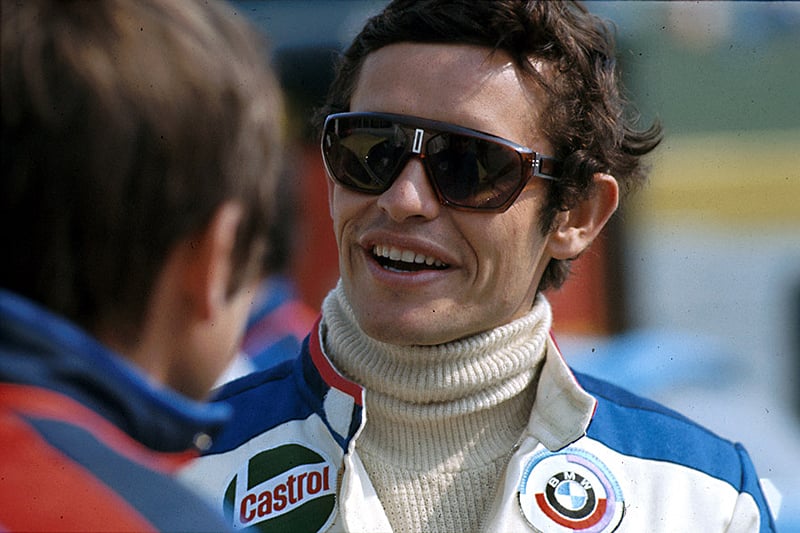Nowadays it is better known simply as ‘BMW M GmbH’, maker of some of the best high-performance cars in the world, with the M1 supercar and generations of M3s and M5s to its credit.
In the 1960s and early 70s, though, BMW as a company was happy merely to supply excellent four-cylinder engines for F2, as well as supporting tuners such as Alpina and Schnitzer which prepared small racing saloons (1800 Tis, 2000 TIs, as well as the entire 02 Series).
For 1973, BMW Motorsport - operating out of an 8000-square metre building in Munich’s Preussenstrasse - really meant business, entering a works team in the European Touring Car Championship, the Le Mans 24 Hours and selected German national events.



The car it used had already seen action, but once Neerpasch and Braungart had worked on the elegant 3.0 CS it became the 3.5 CSL (‘L’ for Leicht, or ‘light’) with first a 3340cc, 360bhp fuel-injected straight-six and then a stroked, 3492cc motor producing 370bhp and capable of running to 8000rpm.
It weighed in at around 2350lb (1065kg) thanks to its magnesium gearbox casing and aluminium doors, bootlid and bonnet.
The drivers (a world-class line-up that included Hans-Joachim Stuck, Chris Amon, Toine Hezemans and Dieter Quester) were in peak condition, too, as Neerpasch had taken the entire team to a ‘driver tuning’ season in St. Moritz.
The result of this uncompromising approach was a six-to-two victory over the faster, lighter, bigger-budget Ford Capris and their Grand Prix drivers (Jackie Stewart, Jochen Mass, Emerson Fittipaldi and Jody Scheckter - all were to do a stint in the blue/white cars).



By 1 July 1973, post-Le Mans, the CSLs had gained their famous ‘Batmobile’ front and rear wings, bonnet strakes and rear window aerodynamic ‘hoop’. All the while they had been running in the now famous brilliant white with blue, violet and red stripes colour scheme, still in use today.
The following year – in the depths of the OPEC oil crisis – BMW Motorsport changed the colour scheme to black with multicolour stripes, running a similar machine now toting a specially homologated four-valve cylinder head. In 3492cc form this developed 420-440bhp. Top speed was around 173mph (the ‘Batmobile’ kit reduced a typical 'Ring time by 10 seconds, by the way, compared with the bigger engine only cutting it by four or five seconds).
Once again the now even-more-developed Cologne Capris were the only opposition (Mass, Lauda et al) but still BMW triumphed in the big-capacity class - only to lose out on overall honours to a two-litre Zakspeed Escort driven by Hans Heyer.
The drivers in 1974 included ‘Superswede’ F1 driver Ronnie Petersen who was to star in BMW saloon cars for the next few years. Paired with Stuck, the combination was a devastating one; both were stunningly quick, with Petersen’s flat-out exaggerated style matched by Stuck’s incredible car control, particularly in the wet.



Wearing flares wider than those covering the car’s Dunlop racing tyres, mutton-chop sideburns and the shortest of lairy BMW skiing jackets, Petersen personified the style of the mid-1970s. And he never appeared terribly fit. But put him in any car and you knew he’d drive the wheels off it.
As a series, the ETCC was dead in the water for 1975. No big Fords and only the occasional factory BMW (now with anti-lock brakes), as the company’s attentions were now centred on the USA and IMSA racing.
European motor racing might have been in the doldrums by the late 1970s, but BMW Motorsport was now firmly on the map, thanks to its brilliant head, Jochen Neerpasch, and the wholehearted backing of the BMW Board.
Author’s note: In the days before mobile phone cameras, it’s to my eternal regret that I wasn’t able to record the sight of what must have been Petersen’s unbadged – yet clearly purposeful – BMW Motorsports-tuned 5 Series in Central London. The strawberry red (530, 533i, 535i, perhaps?) saloon merely carried ‘Polar Caravans’ stickers and just looked ‘different’.
On another occasion I attended an F2 race at Silverstone in 1976 and can honestly say that I have never, EVER heard anything as loud as the throng of mainly BMW four-cylinder engines – totally ear-splitting.
Photos: Rainer W. Schlegelmilch












